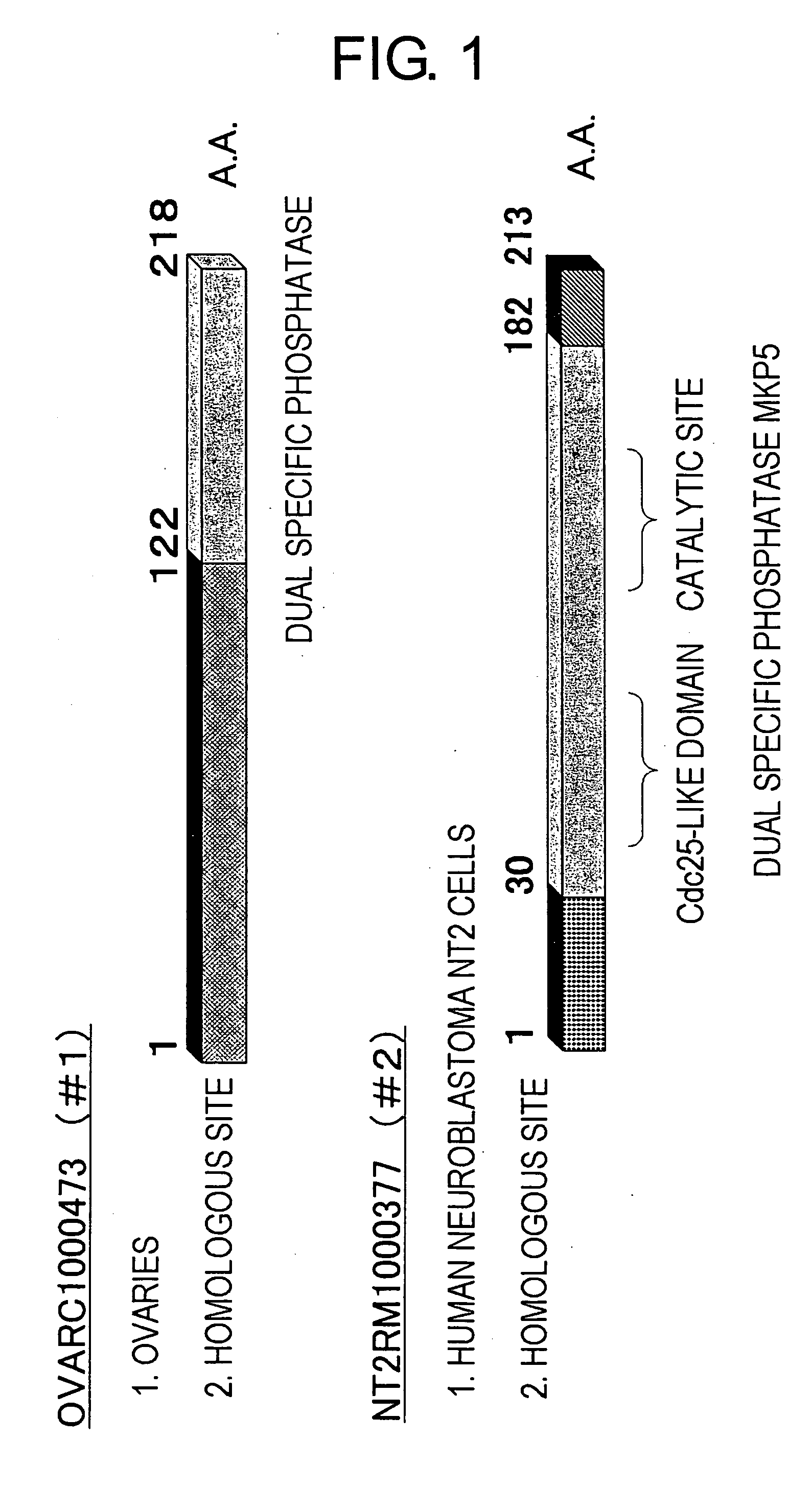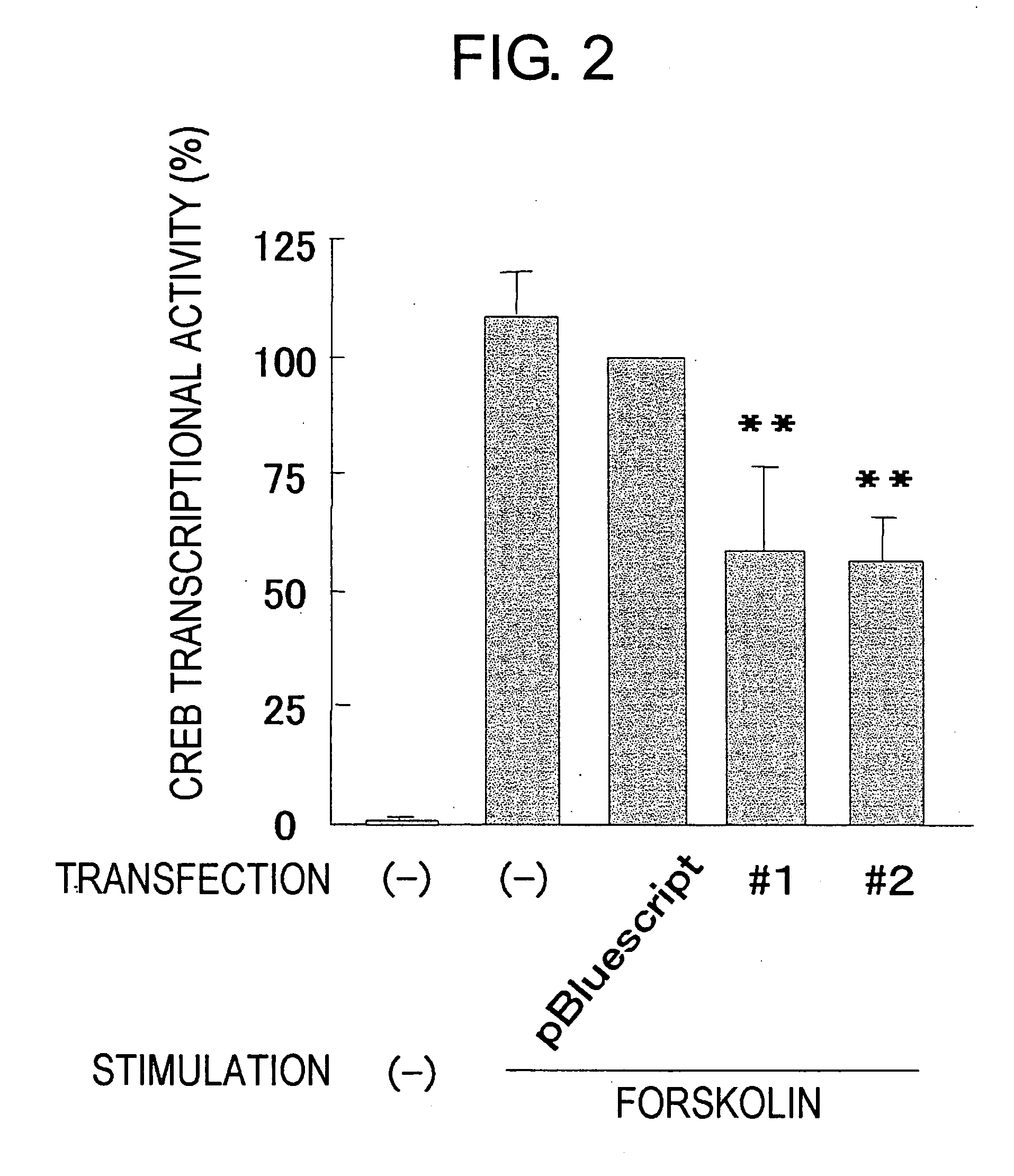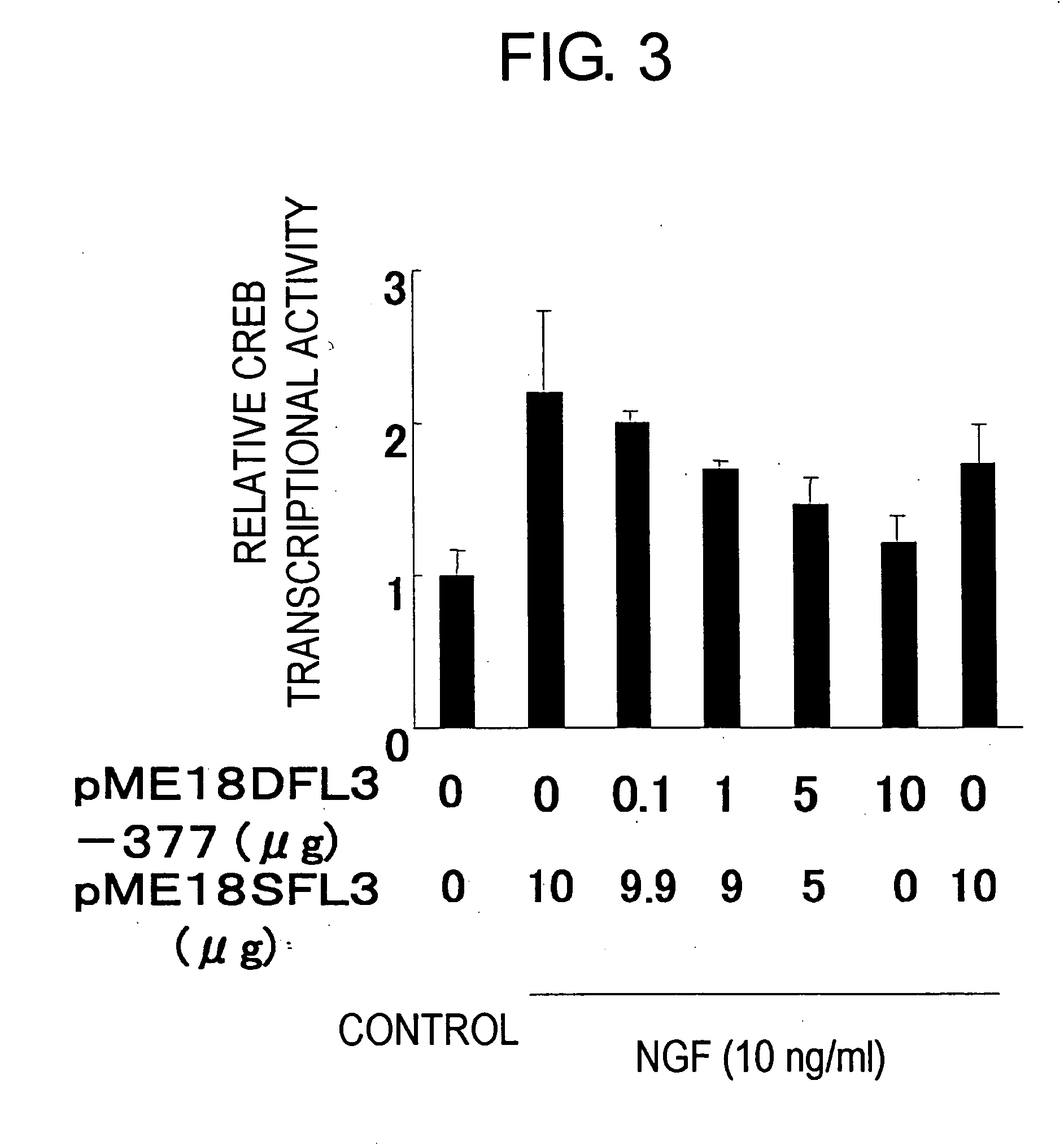Methods of eavaluating phosphatase inhibitors
- Summary
- Abstract
- Description
- Claims
- Application Information
AI Technical Summary
Benefits of technology
Problems solved by technology
Method used
Image
Examples
example 1
Effect of Phosphatase-related Genes on the Increase of Transcriptional Activity due to Forskolin
(1) Helix Clone-derived Expression Vectors and Reporter Expression Vectors
[0204] From a Helix Research Institute cDNA library, or the like, six phosphatase-related genes comprising a phosphatase motif were selected using the BLAST algorithm. Each of the obtained genes was cloned with fixed cDNA directionality into vector pME18SFL3 (GenBank AB009864, Expression Vector), which had been cleaved with DraIII, to yield a phosphatase-related gene expression vector.
[0205] pME18DFL3-377 is an expression vector in which a gene derived from the Helix clone NT2RM1000377 has been ligated downstream of the CMV IE promoter of pME18SFL3. pME18DFL3-473 is an expression vector in which a gene derived from the Helix clone OVARC1000473 has been ligated downstream of the CMV IE promoter.
[0206] pCRE-Luc (Stratagene) is a reporter expression vector in which firefly luciferase reporter gene has been ligated...
example 2
Construction of a Drug Screening System
[0210] 10 μg of pCRE-Luc (Stratagene), 2 μg of pRL3-SV40, and 0 μg to 10 μg of pME18DFL3-377 were transfected into PC12 cells using a method similar to that of Example 1 (2). As a control vector, 0 μg to 10 μg of pME18SFL3 was used, and the total amount was adjusted with pME18DFL3-377 to 10 μg. These transfected cells were plated at 5×105 cells per well on a 96-well plate coated with collagen type I (Nippon Meat Packers, Inc.), and then cultured overnight at 37° C. Thereafter, the cells were washed with RPMI1640 media, mouse 2.5S NGF (Promega) was added at a concentration of 10 ng / mL, and this was cultured for another eight hours at 37° C. CREB activity was then measured using the following method: Specifically, the supernatant was removed by suction, and the cells were dissolved using 20 μL of lysis buffer (12.5mMTris-HCl (pH7.4) , 1%Triton-X). 50 μL of firefly luciferase substrate solution and 50 μL of Renilla luciferase substrate solution (...
example 3
Potentiation Effect Towards Cell Damage
[0212] 10 μg of pCRE-Luc (Stratagene), 2 μg of pRL3-SV40, and 10 μg of pME18DFL3-377 were transfected into PC12 cells using a method similar to that of Example 1 (2). As a control, 10 μg of pBluescript was used instead of pME18DFL3-377.
[0213] These transgenic cells were plated at 5×105 cells per well on a 96-well plate coated with collagen (Nippon Meat Packers, Inc.), and this was then cultured overnight at 37° C. Thereafter, this was washed with RPMI1640 media, mouse 2.5S NGF (Promega) was added at a concentration of 0 ng / mL, 1 ng / mL, or 10 ng / mL, and this was cultured for another eight hours at 37° C.
[0214] The cells were washed once with the media, and then incubated for 18 hours by adding 10 nM of thapsigargin (Sigma) and nerve growth factor (NGF) to DMEM media (Sigma) containing 5% Horse serum and 5% FCS.
[0215] PC12 cells are of the strain derived from rat adrenal pheochromocytoma. Thapsigargin is an inhibitor of sarcoplasmic reticulum...
PUM
| Property | Measurement | Unit |
|---|---|---|
| Fraction | aaaaa | aaaaa |
| Therapeutic | aaaaa | aaaaa |
| Level | aaaaa | aaaaa |
Abstract
Description
Claims
Application Information
 Login to View More
Login to View More - R&D
- Intellectual Property
- Life Sciences
- Materials
- Tech Scout
- Unparalleled Data Quality
- Higher Quality Content
- 60% Fewer Hallucinations
Browse by: Latest US Patents, China's latest patents, Technical Efficacy Thesaurus, Application Domain, Technology Topic, Popular Technical Reports.
© 2025 PatSnap. All rights reserved.Legal|Privacy policy|Modern Slavery Act Transparency Statement|Sitemap|About US| Contact US: help@patsnap.com



